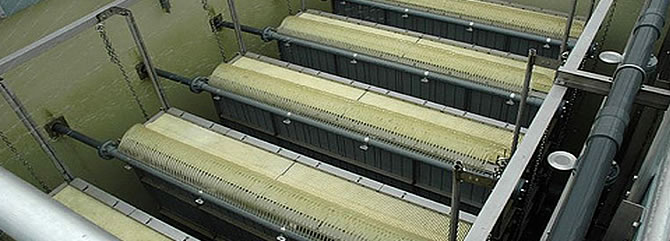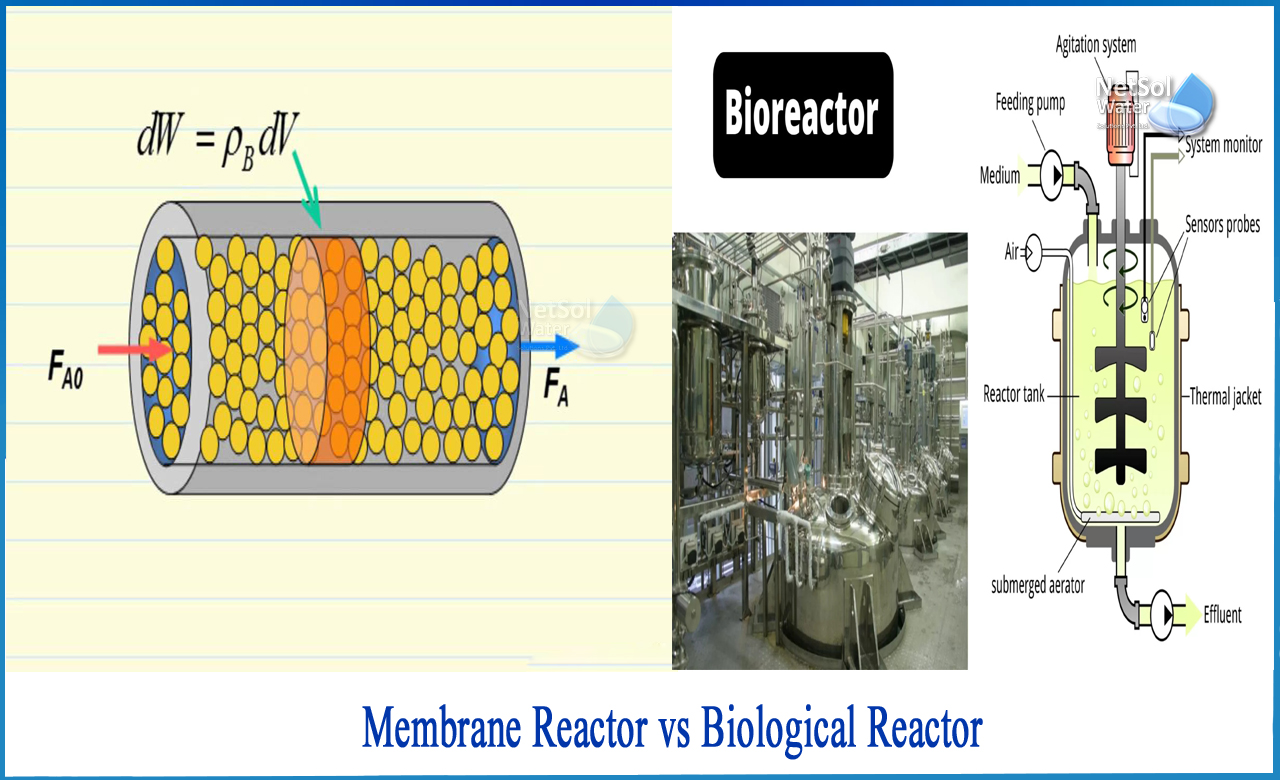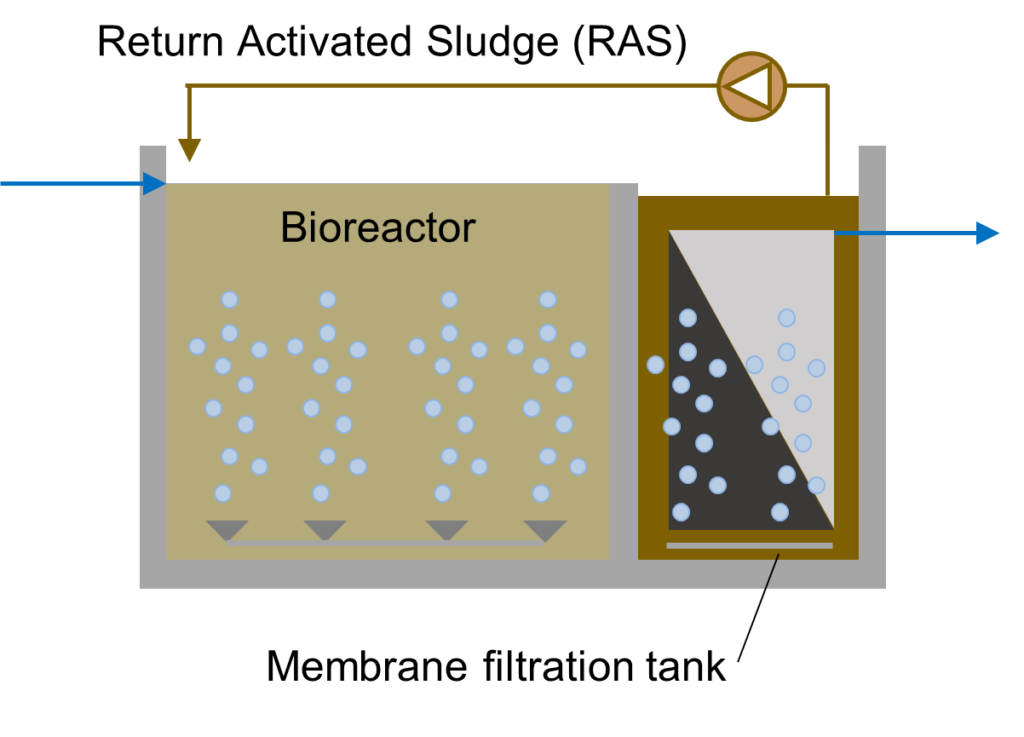Membrane Bioreactor vs. Traditional Treatment Methods: Key Differences Explained
Membrane Bioreactor vs. Traditional Treatment Methods: Key Differences Explained
Blog Article
Just How Membrane Bioreactors Are Revolutionizing Water Filtration Systems
The emergence of membrane bioreactors (MBRs) represents a significant advancement in the field of water purification, merging organic therapy procedures with sophisticated membrane layer purification modern technologies. As international water shortage increases, the duty of MBRs in assisting in safe and clean water reuse and lasting water administration ends up being increasingly crucial.
Summary of Membrane Bioreactors
Membrane layer bioreactors (MBRs) stand for a considerable development in water purification technology, as they incorporate organic treatment processes with membrane layer filtering. This combination enhances the performance of wastewater therapy by using microorganisms to deteriorate organic pollutants while at the same time employing semi-permeable membranes to separate cured water from suspended solids and virus.
The MBR system commonly is composed of an organic reactor where the microbial populace metabolizes pollutants, followed by a membrane layer filtering unit that preserves biomass and enables only tidy water to pass through. This double functionality causes higher effluent top quality compared to standard treatment methods. MBRs can be operated in both set and continuous circulation modes, using flexibility in layout and application.
They likewise allow the recuperation of water for reuse, thus contributing to water sustainability efforts. Generally, MBRs are at the center of improving water treatment efficiency and high quality, showcasing the capacity for cutting-edge remedies in environmental management.
Advantages of MBR Innovation
The combination of organic treatment with membrane filtering supplies countless advantages for water purification processes. Among the primary benefits of Membrane Bioreactor (MBR) technology is its ability to effectively remove both organic and inorganic contaminants, leading to top quality effluent. The membranes serve as a physical barrier, protecting against put on hold solids and pathogens from passing through, which enhances the total safety and security and integrity of cured water.
Furthermore, MBR systems need a smaller footprint compared to conventional therapy approaches, enabling for much more efficient space application. This compact design is specifically useful in metropolitan settings where land is restricted. MBRs likewise show functional adaptability, fitting differing influent high qualities and circulation prices without substantial efficiency deterioration.
Furthermore, the procedure offers boosted nutrient elimination capacities, especially for nitrogen and phosphorus, which are essential for avoiding eutrophication in receiving waters. The decreased sludge production connected with MBR innovation also translates to reduce disposal expenses, making it a cost-effective service over time - Membrane Bioreactor. On the whole, the advantages of MBR innovation placement it as a leading choice for ingenious and sustainable water purification systems, addressing both ecological and economic concerns
Applications in Water Filtration
Applications of Membrane Layer Bioreactor (MBR) modern technology in water purification are varied and impactful, addressing different treatment needs throughout several markets. MBRs properly incorporate biological treatment processes with membrane layer filtering, making them ideal for local wastewater therapy, industrial effluent monitoring, and also drinkable water reuse initiatives.
In local settings, MBRs are increasingly utilized to improve the top quality of treated wastewater, enabling conformity find out here with stringent discharge policies and facilitating the recycling of water for watering and non-potable uses. Their small design my site likewise makes them ideal for urban settings where room is limited.
Industrially, MBR innovation is made use of to deal with procedure water and wastewater, specifically in industries such as food and drink, drugs, and textiles. By efficiently eliminating impurities and suspended solids, MBRs help sectors minimize ecological influences while recuperating beneficial resources from wastewater streams.
In Addition, MBRs are obtaining traction in decentralized water treatment applications, where small systems can be deployed in remote locations or establishing regions. This versatility allows areas to achieve lasting water administration solutions, boosting access to clean water while minimizing reliance on conventional treatment methods.
Study and Success Stories

In an additional example, a textile production facility in Bangladesh took on MBR innovation to resolve its wastewater obstacles. The system reduced chemical oxygen demand (COD) levels from 1,200 mg/L to less than 100 mg/L, therefore fulfilling governing standards and considerably lessening ecological impact.
The College of Cape Town's MBR setup has actually proven effective in dealing with greywater for non-potable reuse on school. This job not just saves drinkable water but likewise functions as an academic design for lasting practices.
Moreover, a seafood handling plant in Norway used MBR technology to deal with effluents having high degrees of natural issue, accomplishing over 90% toxin elimination. These study highlight MBR innovation's convenience and more info here its vital role in improving water high quality throughout varied applications.
Future of Water Therapy Solutions
As worldwide water scarcity and pollution obstacles increase, innovative water therapy solutions are becoming progressively necessary to ensure lasting accessibility to clean water. The future of water therapy hinges on the integration of sophisticated technologies that enhance the effectiveness and performance of purification processes. Membrane layer bioreactors (MBRs) go to the leading edge of this advancement, incorporating biological therapy with membrane filtration to generate top notch effluent suitable for various applications.

Emerging patterns such as resource recovery from wastewater, including nutrients and energy, will even more change therapy centers into environment-friendly hubs. Furthermore, developments in nanotechnology and membrane materials assure improved performance and longevity of filtering systems.

Verdict
Their duty in safe and clean water reuse and sustainable water management highlights their significance in resolving international water shortage obstacles. Continued research and growth will certainly better boost the efficiency and adoption of MBR innovation, guaranteeing a durable future for water treatment solutions.
The emergence of membrane layer bioreactors (MBRs) represents a significant development in the field of water purification, combining organic treatment processes with advanced membrane filtration innovations. As international water shortage magnifies, the duty of MBRs in promoting drinkable water reuse and sustainable water management comes to be increasingly essential. They likewise allow the healing of water for reuse, therefore adding to water sustainability initiatives.As global water scarcity and air pollution difficulties heighten, cutting-edge water treatment remedies are ending up being increasingly crucial to ensure sustainable access to tidy water. Their role in safe and clean water reuse and sustainable water administration highlights their value in attending to worldwide water scarcity challenges.
Report this page